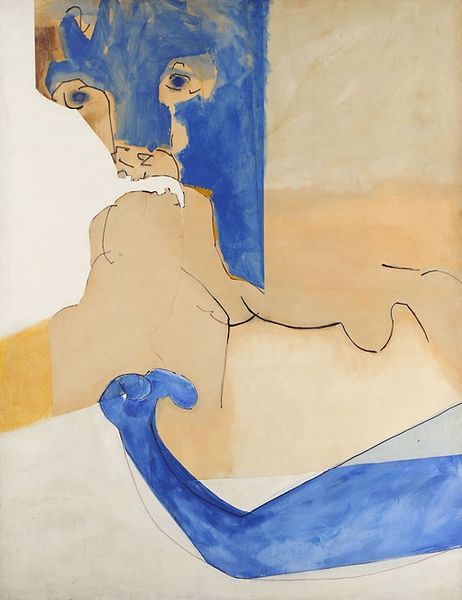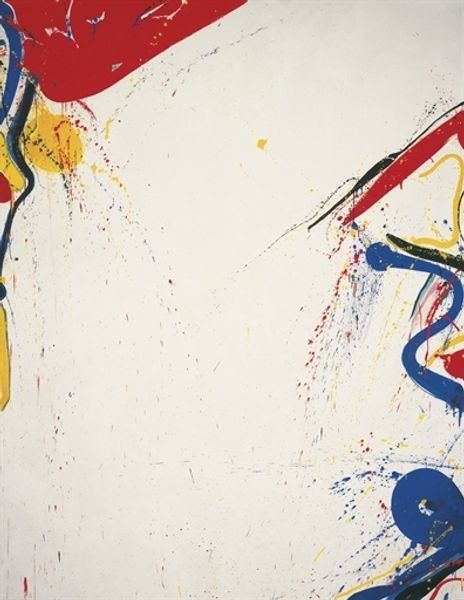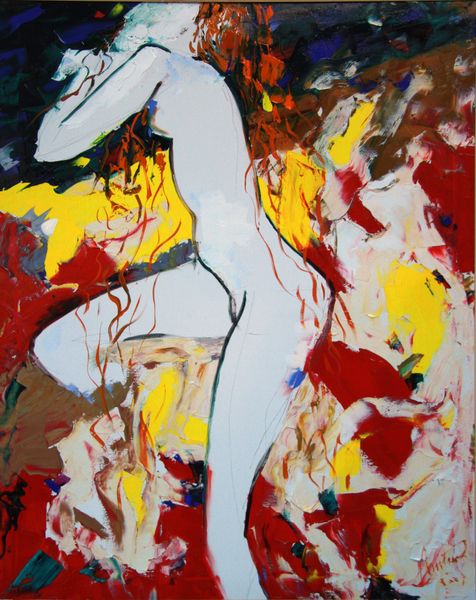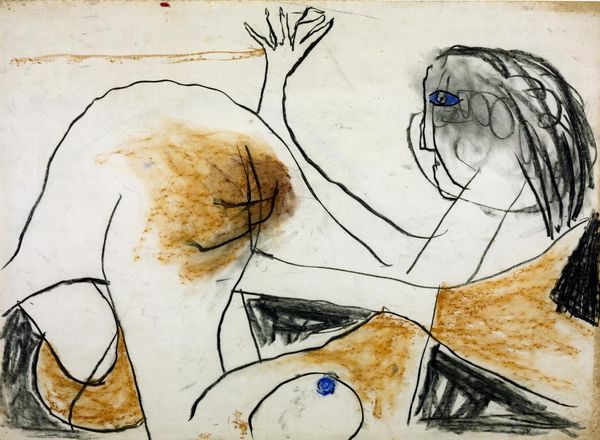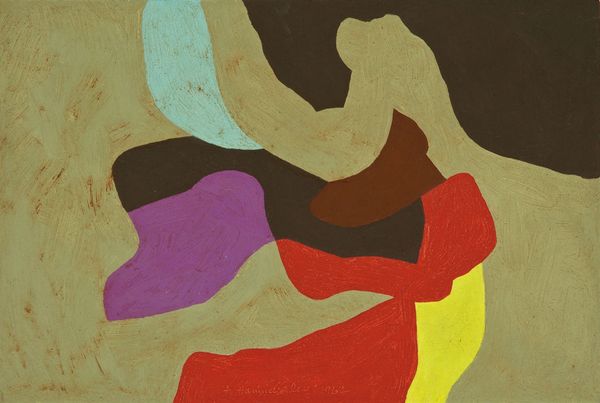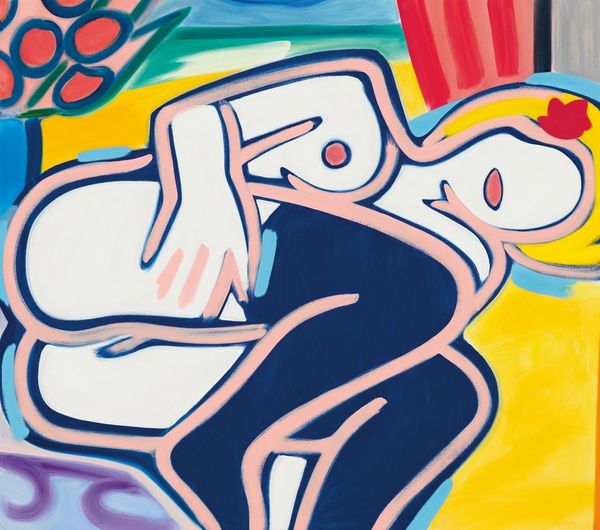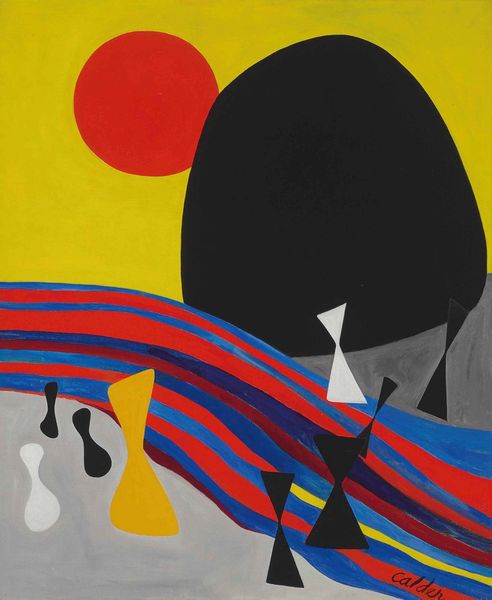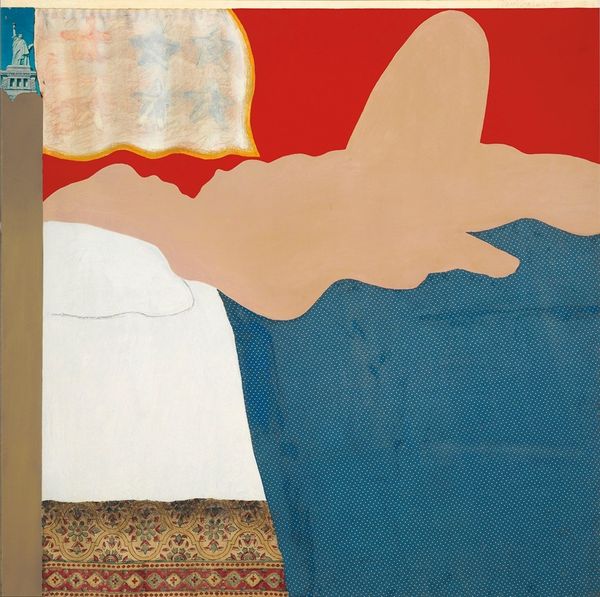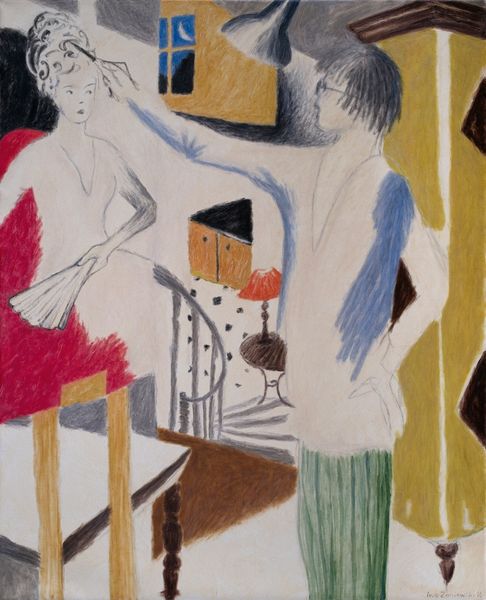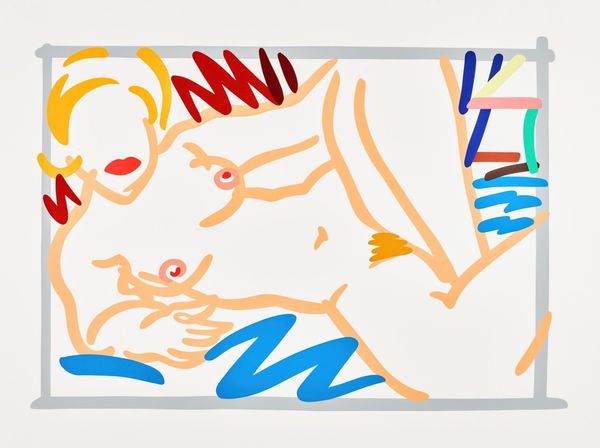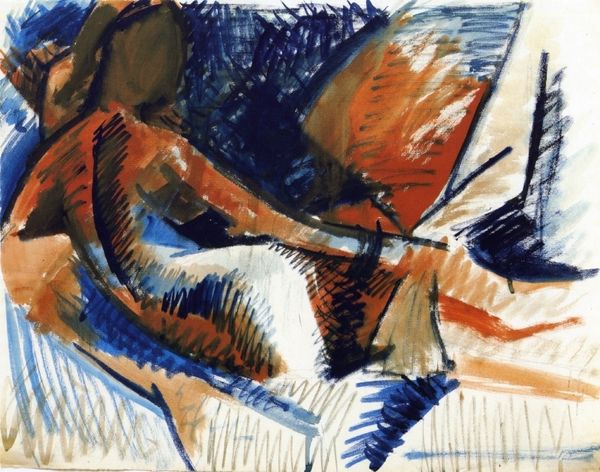
Dimensions: support: 1524 x 1270 mm frame: 1573 x 1313 x 67 mm
Copyright: © The estate of Roger Hilton | CC-BY-NC-ND 4.0 DEED, Photo: Tate
Editor: This is "Oi Yoi Yoi" by Roger Hilton, painted with oil on canvas. The composition feels both fragmented and bold. What formal elements stand out to you? Curator: The stark juxtaposition of red, blue, and black against the unpainted canvas creates a visual tension. Observe how the planes intersect, denying spatial illusion. Hilton employs line to define form. What does the absence of traditional modeling suggest? Editor: Perhaps a focus on pure form over realistic representation? I'm also curious about his use of underpainting. Curator: Precisely. Note how the visible underpainting contributes to the overall flatness and emphasizes the material reality of the canvas. This reveals process over polished finish. Editor: So, it’s not just about *what* is depicted, but how the paint itself creates meaning. Thank you. Curator: Indeed. By analyzing the formal components, we discern the artist's intent and experience the artwork's unique visual language.
Comments
Join the conversation
Join millions of artists and users on Artera today and experience the ultimate creative platform.
tate 8 months ago
⋮
In the early 1960s, Hilton’s art could be figurative or abstract but it always had an erotic charge. This is, perhaps, the most literal description of a situation in his art of that time. He once stated that ‘there are situations, states of mind, moods, etc., which call for some artistic expression’. He gave the source of the painting - ‘my wife dancing on a verandah, we were having a quarrel. She was nude and angry at the time and she was dancing up and down shouting oi yoi yoi – but it is more universal than that.’ Gallery label, September 2016
